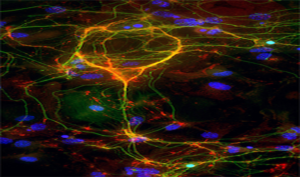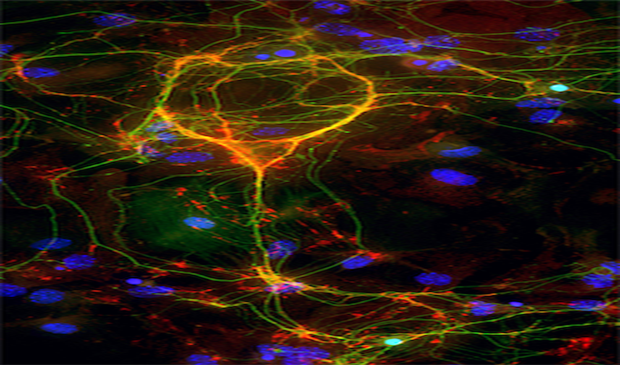Neuroplasticity and cognitive flexibility are essential for adapting to a changing world
New research shows how the brain learns new rules
The article refers to the importance of flexibility and adaptability in a changing world. It states that this skill is necessary to deal with new situations, such as adapting to new working environments or using new technologies.
Furthermore, the article underlines that this skill is practiced daily and that adaptability can be essential for success and growth in professional and personal life.
A team of neuroscientists has discovered a special class of neurons in the prefrontal cortex that enable flexible behaviour and, when dysfunctional, may contribute to conditions such as schizophrenia and bipolar disorder. These long-range inhibitory connections synchronise gamma oscillations in the left and right prefrontal cortex, allowing the brain to change its behaviour at the right time.
This research could lead to new treatments for psychiatric conditions by targeting these long-term inhibitory connections.
Η neuroplasticity (neuroplasticity) refers to the brain's ability to adapt and change its structure and function based on experiences and changes in the environment. It is an important ability that allows the brain to adapt to different situations, such as injury, changes in the environment and functional demands.
Neuroplasticity is related to the creation and storage of new synapses between neurons, as well as the creation of new neurons (neurogenesis) in certain areas of the brain. Neuroplasticity is also important for the recovery of function after brain injury, as well as for learning new skills and knowledge.
Research in the field of neuroplasticity has demonstrated its importance in understanding neurological and psychiatric disorders and in developing new therapeutics.
The article discusses the importance of cognitive flexibility and neuroplasticity in adapting to a changing world. It analyses brain function and its ability to adapt and remodel, and the relationship between cognitive flexibility and neuroplasticity.
Neuroplasticity and cognitive flexibility are closely related, as neuroplasticity allows the brain to create new neural pathways and synapses, cognitive flexibility, as a neurological mechanism of creative adaptation, allows the brain to adapt to new experiences and situations, to process information, to solve problems in different ways and adapt to changes, to learn new skills and to make decisions based on them.
Neuroplasticity and cognitive flexibility are important for survival in a changing world. The ability to adapt to new situations and learn new skills is essential to meet the challenges that arise at every stage of life.
Cognitive flexibility refers to the ability to adapt one's cognitive processes and strategies to cope with new situations and solve problems. In a changing world, cognitive flexibility is essential for navigating change and meeting challenges that may arise.
According to the research literature, cognitive flexibility is related to various abilities, such as problem solving, flexible thinking, innovation and creativity. These abilities are important for growth and success in professional and personal life.
In addition, cognitive flexibility can help in dealing with stress and anxiety, as it allows people to face challenges with greater confidence and effectiveness.
In everyday life, our brain adapts to new situations using the prefrontal cortex. To make these adaptations, your brain changes its activity patterns within a structure called prefrontal cortex (prefrontal cortex) - an area of the brain critical for cognitive functions such as attention, planning and decision-making.
The prefrontal cortex of the brain is involved in executive functions such as self-control and decision-making.
But which specific circuits "tell" the prefrontal cortex to update its activity patterns in order to change behaviour is unknown.
A team of neuroscientists study the mechanisms and processes by which the brain processes information and what happens when this function is impaired. In our recently published research, we discovered a special class of neurons (special class of neurons) in the prefrontal cortex that can enable flexible behaviour and, when dysfunctional, can lead to conditions such as schizophrenia and bipolar disorder.
Inhibitory neurons and learning new rules
The inhibitory neurons (inhibitory neurons) reduce the activity of other neurons in the brain. Researchers have traditionally assumed that they send their electrical and chemical outputs only to nearby neurons. However, we found a specific class of inhibitory neurons in the prefrontal cortex that communicate over long distances with neurons in the opposite hemisphere of the brain.
We wondered whether these long-range inhibitory connections are involved in coordinating changes in activity patterns along the left and right prefrontal cortex. In doing so, they may provide the critical signals that help you change your behavior at the right time.

Endoneurons connect other neurons together. NICHD/McBain Lab via Flickr, CC BY-NC-ND
To test the function of these long-range inhibitory connections, we observed mice performing a task that required them to learn a rule to receive a reward and then adapt to a new rule to continue receiving the reward. In this task, the mice dug into bowls to find hidden food. Initially, the smell of garlic or the presence of sand in a bowl may indicate the location of the hidden food. The specific cue associated with the reward would later change, forcing the mice to learn a new rule.
We found that the silencing of long-range inhibitory connections between the left and right prefrontal cortex caused the mice to get stuck (caused the mice to get stuck) or stick to one rule and it prevented them from learning new ones. They couldn't change gears and learned that the old cue no longer made sense and the new cue meant food.
Brain waves and flexible behaviour
We also made surprising discoveries about how these long-range inhibitory connections create behavioural flexibility. Specifically, they synchronize a set of "brain waves" called gamma oscillations (gamma oscillations) in the two hemispheres. Gamma oscillations are rhythmic fluctuations in brain activity that occur about 40 times per second. These fluctuations can be detected during many cognitive functions, such as when performing a task that requires you to retain information in your memory or making different movements based on what you see on a computer screen.
Although scientists have observed the presence of gamma oscillations for many decades, their function has been controversial. Many researchers believe that the timing of these rhythmic fluctuations in different regions of the brain serves no useful purpose. Others have hypothesized that synchronization in different regions of the brain enhances communication between these regions.
Fluctuations in neural activity are manifested as brain waves or nerve oscillations.
What Do Different Brainwaves Mean? - YouTube
We found a completely different possible role for gamma timing. When long-range inhibitory connections synchronize gamma oscillations in left and right prefrontal cortex, it also appears to communicate with each other (gate communication between them).
When mice learn to ignore a previously established rule that no longer leads to a reward, these connections synchronize gamma oscillations and appear to stop one hemisphere from maintaining unnecessary patterns of activity in the other.
In other words, long-range inhibitory connections seem to stop input from one hemisphere from "blocking" the other when trying to learn something new.
For example, the left prefrontal cortex can "remind" the right prefrontal cortex of your usual route to work. But when long-range inhibitory connections synchronize these two regions, they also seem to shut down these reminders and allow new patterns of brain activity corresponding to your new commute.
Finally, these long-range inhibitory connections also trigger long-lasting effects (trigger long-lasting-effects). Disrupting these connections only once made the mice have trouble learning new rules several days later. In contrast, rhythmic stimulation of these connections to artificially synchronize gamma oscillations can reverse these deficits and restore normal learning.
Cognitive flexibility and schizophrenia
Long-range inhibitory connections play an important role in cognitive flexibility. The inability to appropriately update previously learned rules is a hallmark form of cognitive impairment in psychiatric conditions such as schizophrenia and bipolar disorder.
Research has also seen deficiencies i gamma synchronization (deficiencies i gamma synchronization) and abnormalities in a class of prefrontal inhibitory neurons, which includes those we studied, in people with schizophrenia. In this context, our study shows that treatments targeting these long-range inhibitory connections can help improve cognitive function in people with schizophrenia by synchronizing gamma oscillations.
Many details of how these connections affect brain circuits remain unknown. For example, we don't know exactly which cells within the prefrontal cortex receive inputs from these long-range inhibitory connections and change their activity patterns to learn new rules. We also don't know if there are specific molecular pathways that produce the long-term changes in neural activity.
The answer to these questions could reveal how the brain flexibly switches between retaining and updating old information and potentially lead to new treatments for schizophrenia and other psychiatric conditions.
About this neuroscience research news
Authored by Vikaas Sohal and Kathleen Cho: The Conversation
Source :
2. https://www.youtube.com/watch?v=i47_jiCsBMs&t=1s





